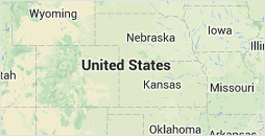Barry Kinson
PHONE NUMBER : --------------------
Map

Different Technologies With A Broadband Connection

There are different types of transmission technologies with broadband connections. These include Digital Subscriber Line (DSL), Cable modem, fiber optic, Broadband over Powerline (BPL) and Wireless.
Various factors help you determine the broadband technology. These may include the location where you stay, additional services, the price, and availability. So, if you are not aware of broadband technologies, then you should scroll ahead to know more.
Digital Subscriber Line (DSL)
DSL can be referred to as a wireless technology that transmits data over the telephone lines that have been already set up at residential areas and workplaces. The transmission speed can always vary between hundred Kbps to millions of bits per second (Mbps). The availability generally depends on the distance from the location to the telephone company. DSL is broadly classified as Asymmetrical Digital Subscriber Line (ADSL) and Symmetrical Digital Subscriber Line (SDSL). While ADSL is for individuals who prefer surfing the internet at high speeds, SDSL is for organizations that need high bandwidth for video conferencing.
Cable Modem
If you avail internet services from cable operators, then the technology is called as a cable modem. Ideally, such type of service is used when families prefer listening to soundtracks and watching movies on a television set. As subscribers access the service by switching on their computers, they can expect a transmission speed of 1.5 Mbps or more. But, over a period of time, the speed varies due to the cable network and the traffic load.
Fiber Optic
The Fiber optic technology sends light through glass fibers after converting electric signals to light. Many factors like bandwidth and configuration determine the actual internet speed. With the same fiber, it's also feasible to make VoIP calls and enjoy video-on-demand. In many situations, service providers come up with plans that offer internet access as they plan to expand the fiber networks.
Broadband over Powerline (BPL)
If you're seeking a connection with the existing electric power distribution network, then you can use BPL for your home. While such a technology isn't ubiquitous, households can benefit owing to its potential. Since the lines are installed virtually, the need to build broadband facilities is ruled out.
Wireless
Wireless technology offers an advantage when it's pretty expensive to provide DSL or cable modem services. Once the service is offered, the internet can easily be accessed from a fixed location. At public places such as restaurants, coffee shops, airports or convention centers, individuals can surf the internet on their smartphones through a hot spot. Due to high speeds, such technology is now gaining popularity in the market.
Do contact reliable broadband internet providers once you have decided on the internet connection.
Author Resource:
This article is written by Barry Kinson. He has got into writing professionally and uploads regular informative articles. You can refer to the articles and the information put down by him and clears your doubts on wireless broadband plans. You may also visit internet access blog.
